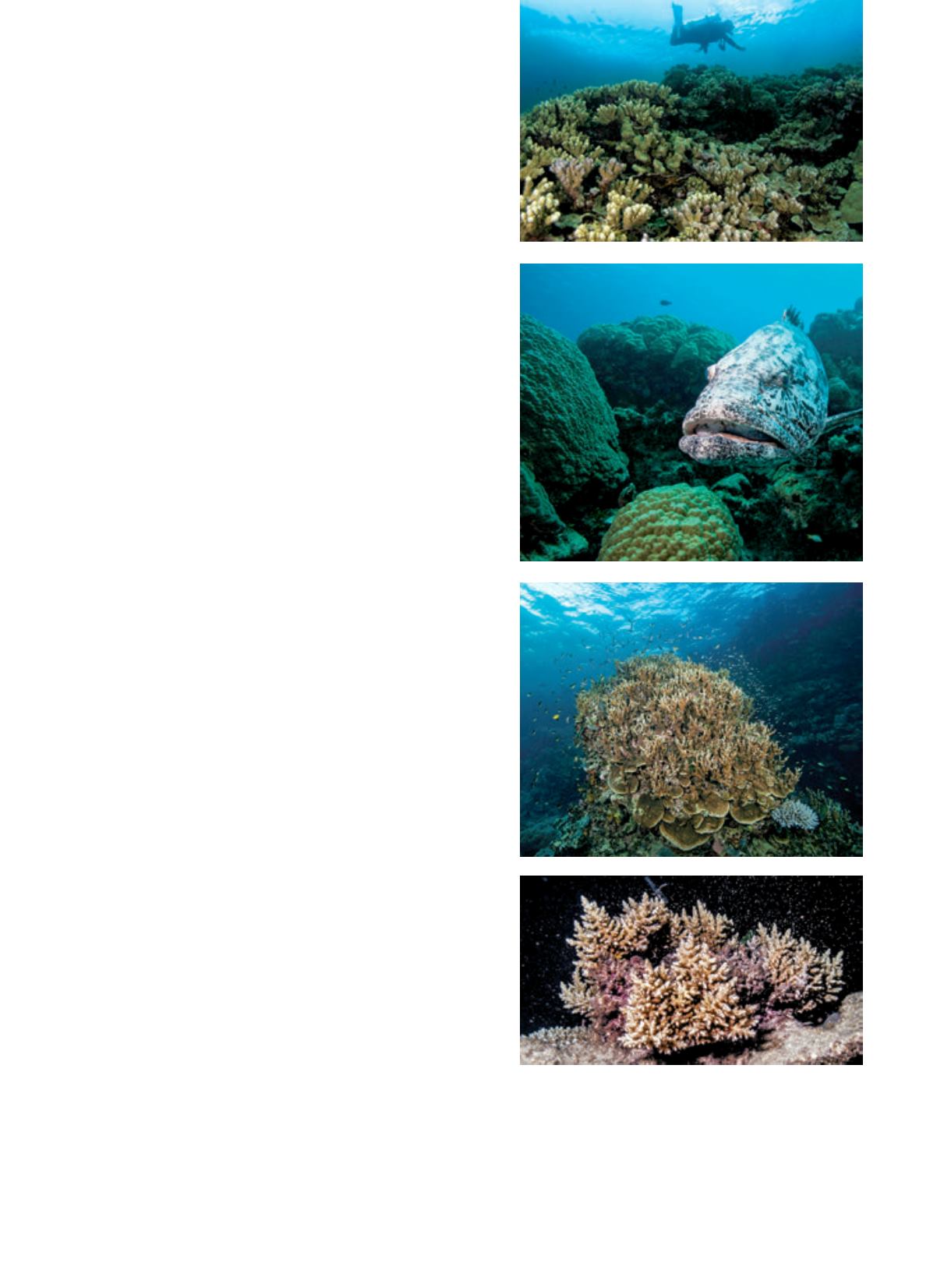

1998 mass bleaching event. While 90 percent of the coral
cover was lost from this event, 12 of the 21 surveyed reefs
recovered to their predisturbance status. The resilient
reefs had the highest structural complexity and were
generally deeper but also had decreased nutrient levels (i.e.,
decreased pollution, better water quality) and healthy fish
populations (no overfishing).
Reef resilience seems to be dependent largely on healthy,
coral-dominated reef systems. Like reefs throughout the
world, the GBR is experiencing numerous stresses in
addition to global climate change. To build reef resilience
against future climactic events, we should concentrate on
decreasing local threats. The GBRMPA lists local threats
to the GBR as coastal development, declining water quality
from land runoff and fishing impacts. Corals weakened by
threats such as these are less likely to be resilient when the
next climactic event happens.
El Niño events will continue to occur, and unless humans
around the world make some aggressive changes toward
reducing climate-changing emissions, the ocean’s baseline
temperatures will continue to rise. The best prevention
against mass mortality is resilience to warm water. Healthy
corals are resilient, and though they may bleach as a result of
El Niño, healthy corals have the greatest chance of survival.
WHERE DO WE GO FROM HERE?
The GBR remains an amazing dive site for visitors from
around the globe to enjoy. The annual coral spawning
generally occurs along the GBR after the new moon in
October or November. While the northern section did not
have a normal full spawn, the mass spawning event on the
GBR did occur in November 2016, including on reefs in the
far-north region. This is an important note, because corals
that are in a weakened or stressed state will not put energy
toward reproduction.
Some corals are more resistant to bleaching than others.
Research is ongoing to identify the genotypes of the most
resilient corals (see “The Restoration Revolution” on
Page 18). These extremely resilient corals may be the ones
that rebuild the reef.
The bleaching of the GBR received considerable media
attention, but similar mass bleaching events are occurring on
reefs across the world. This should incite greater awareness
of global coral reef issues. What can you do to make a
difference? Try swapping out your car for a bike every once
in a while. Recycle. Buy local. Use public transportation.
Unplug your charger when you’re not using it. Plant a tree.
And, of course, go dive. Maybe even visit that bucket list
destination, the GBR. As long as dive tourism is a serious
source of revenue, other exploitative and extractive uses of
the reef will meet with resistance.
AD
ALERTDIVER.COM|
105
In late 2016, local divers from the Great Barrier Reef (GBR)
submitted these photos of healthy hard corals that might have
bleached earlier that year. The photo of the spawning coral
(immediately above) was taken Nov. 19, 2016. Previously
bleached corals often need a year or two before they are ready
to spawn again, so the widespread coral spawning observed in
late 2016 is cause for optimism about the reproductive health
of GBR hard corals.
NICK LEIGH
STUART IRELAND
STUART IRELAND
VILI BALEILEVUKA


















